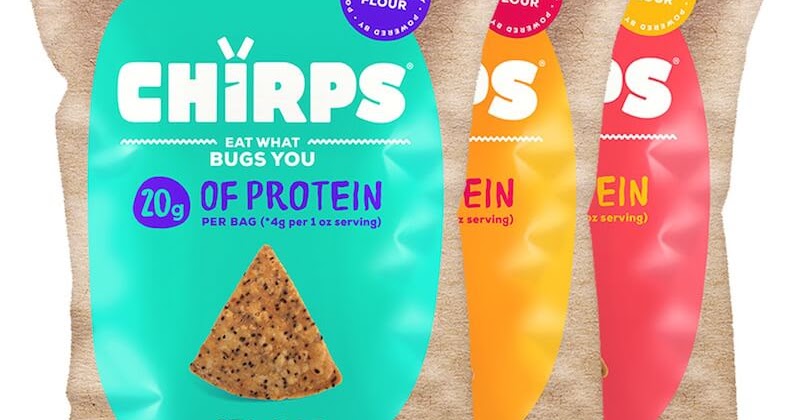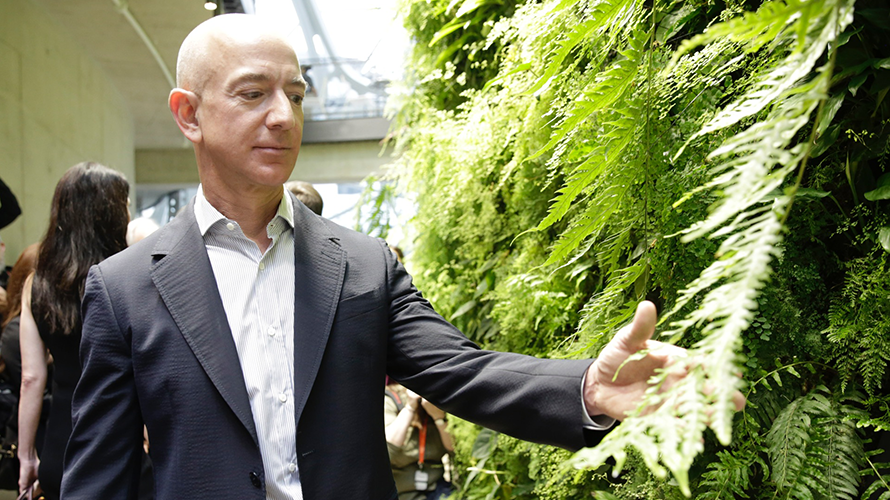To: The Impact Readers
Boo 🎃
It’s the month of Halloween, which means I finally have the excuse I needed to break out a bunch of Halloween and Holiday themed emojis. Don’t you just love the end of the year.
Q4 of any year is amazing – likely not financially unless you are in the business of holiday gifting – but this is a time you can slow down and just enjoy with family.
Maybe for the holidays this year we can start including solar tax credits as gifts or cash to use towards a new EV or solar system 🧙.
In Your Inbox: Net Zero Pledge; and Net Metering challenges continues to ensue.

When you hear sustainable or alternative proteins, most people often think about plant-based or cell-based meats. However, there’s much more than just meat – there are also other forms of protein, like insects.
I had the pleasure of talking with Rose Wang, the Co-Founder of Chirps Chips, about how they are creating sustainable food. Chirps Chips make tortilla chips with cricket protein – crickets take fewer resources and produce fewer green house gases, compared to meat. Chirps Chips was founded in 2013, and today is in thousands of stores, including the largest grocery chain in the US.
How did Chirps Chips start?
It all started as a dare when I was studying abroad. There was a vendor who was selling fried scorpion kebabs, and a friend dare me to eat one. Even though I was terrified, I decided to do it. To my surprise, it tasted like shrimp.
When I got back to school, about a week later, my friend and co-founder, Laura, sent me an article about eating bugs. Not only that, she also had a fried caterpillar when she was in Tanzania.
Like that, we thought it would be a fun experiment to cook bugs. You should know, there are about 2000 varieties of edible insects. We looked at what was available in the marketplace and did some market research. Crickets were one of the few out there being produced, and they were also nutritionally dense. Not only that, but insects are a more sustainable source of protein.
What was the mission behind Chirps Chips?
What was most compelling when we were first starting was that the entire food system for insects is more sustainable than other food systems. You can feed crickets food waste, and it only takes 4-6 weeks for crickets to fully grow. It also takes less space, as you can grow one pound of crickets in one square foot of space, giving the production more flexibility in terms of location and transportation logistics. There is also a better feed to food production conversion and water usage – it takes about 6000 gallons of water to make a pound of beef but only one gallon of water to make a pound of crickets.
I realized that if we could get people to change their consumption, then we could actually build up the supply chain and fundamentally shift power away from unsustainable proteins like soy and whey.
Today, we use crickets milled into a flour to make tortilla chips. We want to normalize insect foods, with the goal to substitute animal protein with insect protein, converting livestock farming to insect farming. By doing so, we reduce land & water usage, and green gas emissions.
What does regulation/policy look like?
We want more regulation because bugs are already considered disgusting or dirty, we can’t afford accidents. If we had a bad case, that would reinforce that message and would ruin everything.
We keep the quality bar extremely high, where every batch of cricket flour is microbially tested and we keep reports. As a result, we are effectively regulating our suppliers. We understand how important this is, and we want to change the system.
What does the future look like? What will it take to get there?
The time is now to make a change in the food sector – by 2050 we will need to feed 9 billion people. When we look at how we want Chirps and the insect industry to grow, there’s no reason why we can’t be a replacement for soy and whey, and even meat. However, to get to that point, we need to educate consumers.
We’re trying to educate our audience in more than one form about this, because has always been more than just been about an entire movement and education around sustainability. And that is a really great way to get people’s attention.
I think what interested me personally most about eating insects, was that we were dealing with the fundamental emotions like disgust, fear, and it was really hard to see.
We knew that we wanted to advertise that our insects were more sustainable, so we put it up front and center – we wanted to come out and say this in a very bold way. The thing is, if you try to hide the fact that we are using insects, people find out later and will feel lied to. However, if it’s a choice, you are empowering the consumers to make that choice. This is much slower, but it results in a much stronger community and movement.
Outlook
The alternative protein market is new and ripe for innovation. Chirps Chips fits the bill, offering insect protein. Even though it may take more time to gain market share and drive growth, Chirps will be one of many players in the space. Ynsect’s recent $372M raise demonstrates that insect protein will be a major piece in the future.
Chirps is partnering with Penguin to publish Eat Bugs: Project Startup, a children’s book series (grades 3-5) to educate kids about entrepreneurship and the benefits of eating bugs in a fun, fictional book series modeled after The Babysitter’s Club. Get a pre-order here.
Sign up for The Impact and learn the perspectives behind the latest sustainability trends

Net Zero commitments are the new fad this year for companies. According to the Science Based Targets initiative (SBTi), more than 1,500 companies have committed to net-zero emissions.
This initiative is a certification for net-zero pledges. which considers corporate commitments “science-based” if they set goals in line with a 1.5°C future. Committed companies have 24 months to have their targets approved and published by the SBTi.
The catch is that these commitments don’t necessarily mean that companies are reducing their footprint. Companies could just purchase carbon offsets to meet their goals.
Amazon Is Putting Its Money Where Its Mouth Is
A couple weeks back, Amazon announced their first 5 investments from its Climate Pledge Fund. Not only is Amazon investing in these companies, but using their products too. The companies include:
Why does this matter?
Amazon is making sure that everyone knows the steps they are taking to implement their emissions goals. Amazon is already a big name and is taking advantage of that and setting the trend of transparency with their actions.
By implementing solutions, rather than just purchasing offsets, Amazon is demonstrating that larger organizations have a role to play for going net-zero. Carbon offsets are also a great way to meet goals, but offsets should really only be utilized by smaller companies and individuals. For a large company, purchasing carbon offsets is nothing.
What’s next?
Reducing carbon emissions and carbon capture will continue to accelerate. The demand is starting to shift, followed by the supporting policy. The supply side is ready for growth – from existing solutions to new innovations.

Net Metering has been one of the big value contributors in the residential solar market. Allowing homeowners to receive equal bill credits for every kWh of energy they send back into the grid via a Net Metering program makes the incentive to go solar easy to understand.
However, the complexity of Net Metering is rarely understood as the value a utility receives from solar in small amounts from residential assets is no longer equal to what you pay for electricity.
Ameren – in a quick move – just abolished its Net Metering program all together, forcing solar installers and advocacy groups to freak out as the whole basis for their businesses to exist may have disappeared.
Installers Depend On Net Metering To Get More Price Conscious Buyers To Go Solar.
Fun fact, most homeowners that go solar don’t even know about the chaos of solar net metering. It’s not even the installers fault here – it’s the issue of changing rules and policy that no one can be expected to keep up with.
Net Metering provides an easy way for installers to design a system that typically can meet a persons annual energy consumption by up to 110%. This allows them to “0” out their utility bill and make a compelling case for investing in solar.
Hawaii Is The Biggest Example Of Why Net Metering Doesn’t Work
Hawaii now has a non-export rule for all new solar systems. This isn’t because the utility is anti solar – it actually has been highly supportive of it.
Having too much capacity with not enough users is the big issue now days.
Now in the Midwest and even in California there likely isn’t a situation of “Too Much Solar Capacity”.
Utilities Use Net Metering To Compensate Based On THEIR Value Of That Electricity
The value of renewable power from small residential systems isn’t huge and Net Metering pricing changes reflect that. Utilities don’t want more systems interconnected and in a way this is spurring a building electrification movement as self-consumption is likely going to provide a higher value to the homeowner.
Ameren in their move is showing that they don’t value small scale residential solar anymore in this move.
However, Ameren does still have investments into renewable power sources and microgrid research – likely not for show, but because they realize eventually they will have to switch their entire portfolio to renewables.
Larger scale solar projects and community solar projects are far easier and more valuable to companies and utilities and can reduce the complexity of selling to a homeowner.
It is our belief that Net Metering will either be fully gone or abolished all together in the coming years – either spurring a massive growth in community solar projects or a huge building electrification movement. We believe it’s going to be the latter.
Writers: Swarnav S Pujari, Ian Sumner, Daniel Kriozere
If you aren’t absolutely thrilled with The Impact, reply and let us know why. Or you can unsubscribe from all updates by clicking here.
Copyright © The Impact 2020. All Rights Reserved || 19 Morris Ave, Bldg 128, Brooklyn NY 11205
Develop your market map of up-and-coming climate startups and market opportunities by subscribing to our weekly newsletter for free.